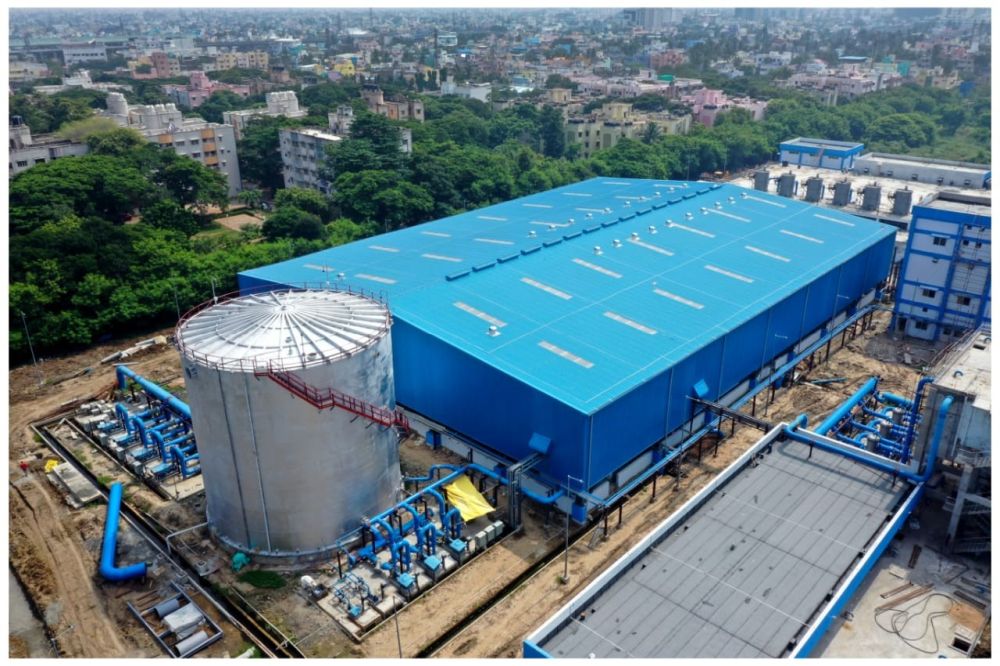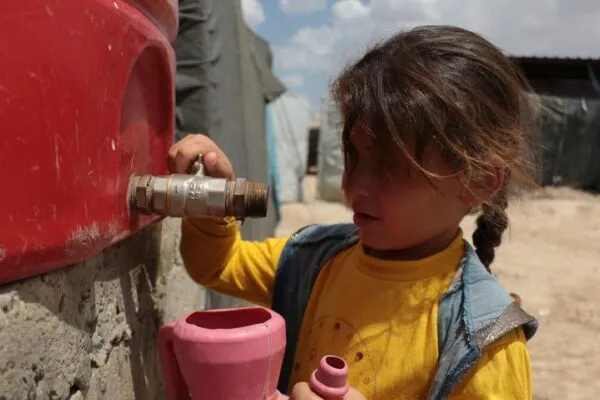Chennai Becomes the First Indian City to Implement Large-Scale Water Recycling
Challenges of water supply are becoming more complicated all across the world, and it comes as no surprise that the curse of the water crisis has even extended to Chennai, a city notorious for its havocking floods. India’s southern metropolis experienced a severe water shortage in 2019 and officials declared “Day Zero”, bringing Chennai to a halt. People stood for hours to fill the containers and violence erupted. To save the city from worrying water scarcity, water was brought by trains from 200 kilometres away.
Learning from Singapore’s acclaimed initiative, the city is in now full swing to recycle wastewater for industrial use, thereby becoming the first Indian city to implement large-scale water recycling.

Has Chennai finally learned from the “Day Zero” water crisis? | Image: Eco-Business
Chennai’s Water Woes
While climate change and extreme weather conditions have played a significant role in water scarcity, the main reason is poor planning. As the city continues to grow, the areas around the floodplain have disappeared. Traditionally, the city of 9 million residents, experiences the highest rainfall in India. However, the four major lakes around the city are replenishing by annual monsoon rains.
It is recorded that between 1893 to 2017, the total area of the water bodies in Chennai reduced from 12.6 square kilometres to 3.2 square kilometres. With fewer places to hold the water, floods increased. Chennai experienced the worst floods of the century in 2015. It is right after a span of four years, the news of water shortage became more prevalent. Chennai is an extreme example of the water crisis that is disrupting cities all over the world with the rapid population increase.
The demand for water in Chennai is around 1,200 MLD of water each year. But the lakes in the current situation can only meet the demand of 500 to 800 MLD every year. This also depends on the volume of rainfall that braces the land each year.
Floods and water scarcity have the same roots: Urbanisation and construction in an area, mindless of the place’s natural limits.
Says Nityanand Jayaraman, a writer and environmental activist who lives in Chennai.

Tertiary Treatment Reserve Osmosis (TTRO) plant in Chennai | Image: IDE Technologies
As the demand exceeds the water supply in Chennai, the metropolitan city is now looking for other sources to meet its ever-growing water needs. Some of the sources include precious groundwater and desalinating water which is costing a lot to the city.
Water recycling has become increasingly popular, adding to a new and sustainable source of water. This method can be used for fresh and desalinated water, which is readily available. It is also more reliable than rainfall, which varies every year. A study by Anna University estimates that by 2050, Chennai’s 50% of the water demand will be met by recycling and reusing the sewage.
Retrieving Water Resources Economically and Sustainably
The good news is, Chennai is expected to recycle 25% of its wastewater for industrial and indirect use in 2021. The Chennai Metropolitan Water Supply and Sewerage Board (CMWSSB) has already started its trial operations for pilot projects using tertiary ultrafiltration treatment in March.
Two Tertiary Treatment Reverse Osmosis (TTRO) plants were launched in late 2019, the first facilities of this nature to be launched in India. One of these plants purifies 45 million litres of water per day, reducing the consumption of freshwater. The plants in Kodugaiyur and Koyanbedu were established to serve the industries in the city’s northern belt and nearby areas. Industries now receive water treated in sewage treatment plants, ensuring quality on par with raw water that was supplied before.
Also Read: Tale of Worsening Water Scarcity in the Indian Subcontinent
This initiative has brought Chennai under the limelight, receiving awards including the Global Water Award and HUDCO’s 2019 award to improve the livelihood and improving the resilience of the city.
With increasing urbanization, water resource disruption, and unpredictable rainfall exposure to water scarcity, cities need to explore sustainable and economical options to revive water supply. Some of the predictable actions are managing the citizen’s demands, fixing the frequent leakage and losses, and taking steps to conserve the precious underground water requires urgent attention.
We need to take these actions and learn from “Day Zero”, guiding the future generations and assuring them that these actions are carefully put together, keeping humanity and our planet in mind.
Source: World Bank


